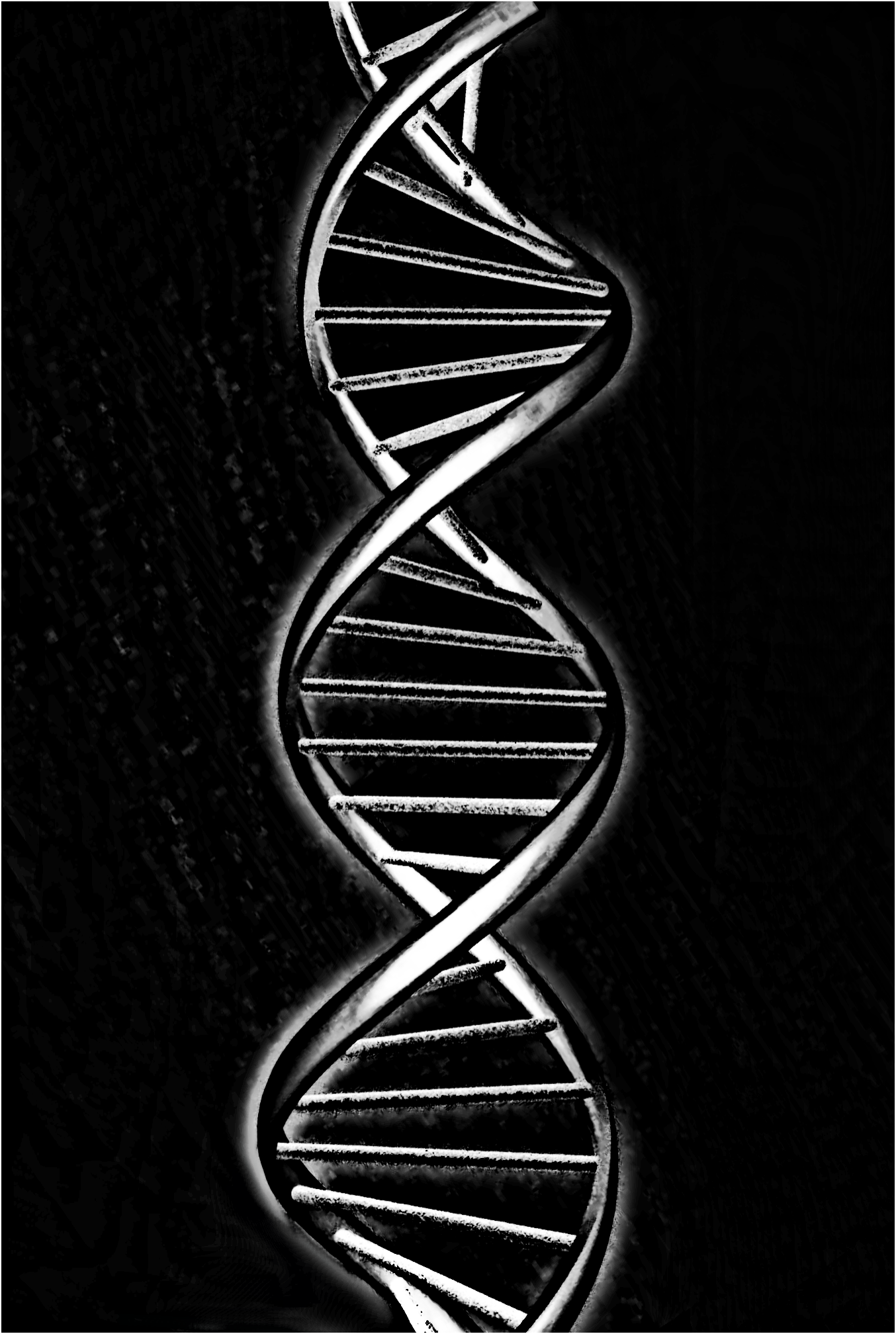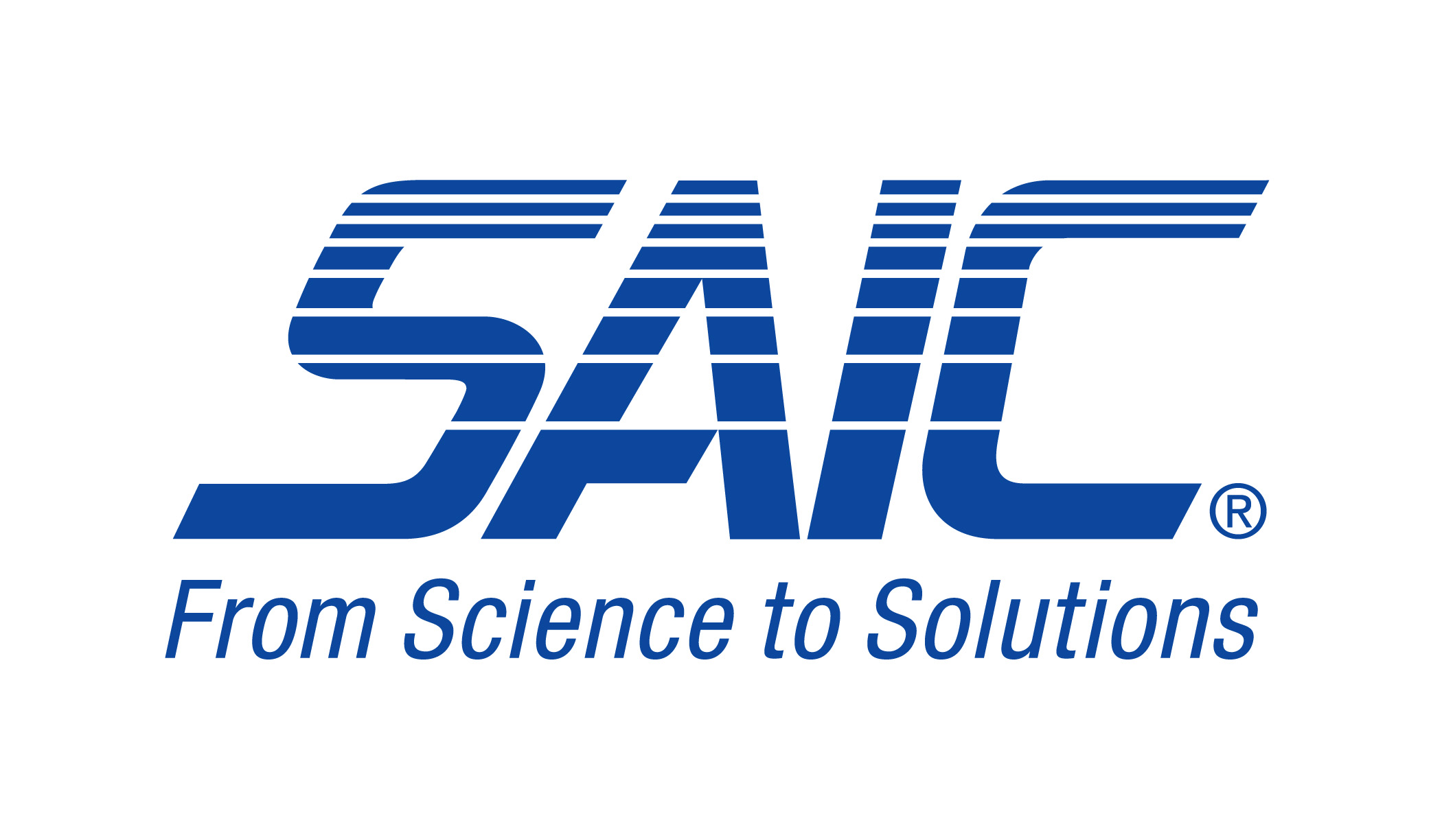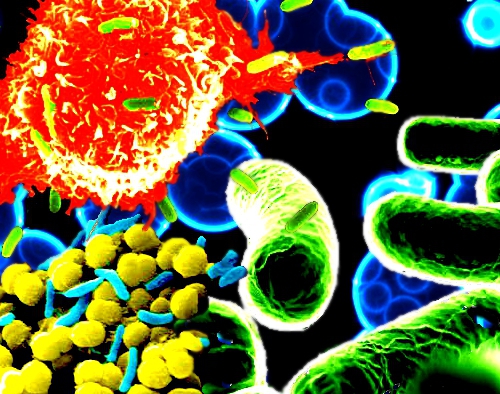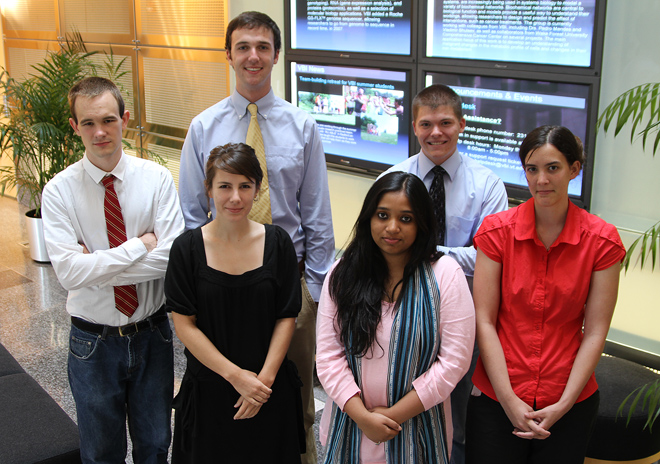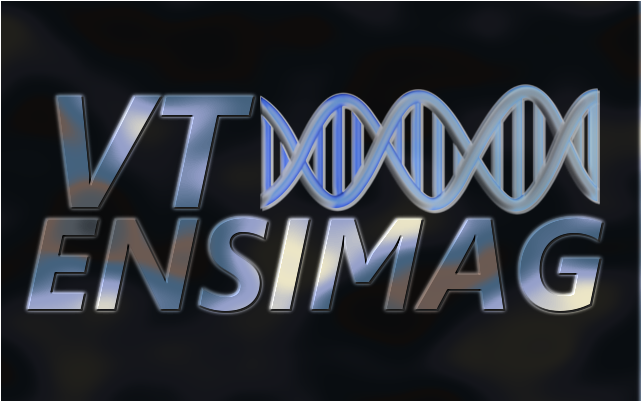Team:VT-ENSIMAG Biosecurity
From 2010.igem.org
(→Introduction: presentation of our project) |
|||
| (45 intermediate revisions not shown) | |||
| Line 1: | Line 1: | ||
| - | + | {{Template:Team:VT_Ensimag_2010-Biosecurity/Templates/main|Home| content= | |
| + | __NOTOC__ | ||
| - | |||
| - | |||
| - | = | + | <div style="position:relative; top:-50px; left:250px"> |
| + | <html> | ||
| + | <form method="get" action="http://www.google.com/search"> | ||
| - | + | <input type="text" name="q" size="31" | |
| + | maxlength="255" value="" /> | ||
| + | <input type="submit" value=" Search " /> | ||
| + | <input type="radio" name="sitesearch" value="" /> | ||
| + | The Web | ||
| + | <input type="radio" name="sitesearch" | ||
| + | value="https://2010.igem.org/Team:VT-ENSIMAG_Biosecurity" checked /> In WIKI <br /> | ||
| - | + | </form> | |
| - | + | </html> | |
| + | </div> | ||
| - | + | <div style="position:relative; top:-100px; left:700px"> | |
| + | <html> | ||
| + | <table width="133" border="0" cellspacing="0" cellpadding="3"><tr><td align="center"><a href="http://www.website-hit-counters.com/" target="_blank"><img src="http://www.website-hit-counters.com/cgi-bin/image.pl?URL=427634-6314" alt="" title="HITS" border="0" ></a></td></tr><tr><td align="center"><font style="font-family: Geneva, Arial, Helvetica, sans-serif; font-size: 9px; color: #330006; text-decoration: none;"> <a href="http://www.website-hit-counters.com/" target="_blank" style="font-family: Geneva, Arial, Helvetica, sans-serif; font-size: 10px; color: #330006; text-decoration: none;" title="Hits for WIKI">Hits for WIKI</a> </font></td></tr></table> | ||
| - | + | </html> | |
| + | </div> | ||
| + | =Abstract= | ||
| + | [[Image:Dna-computer.jpg|180px|right]] | ||
| + | In order to mitigate the biosecurity risks associated with the potential dual use of gene synthesis, the U.S. Government published a draft version of a “Screening Framework Guidance for Synthetic Double-Stranded DNA Providers" in late 2009. This document outlines a minimal DNA sequence screening protocol that gene synthesis companies are encouraged to use prior to fulfilling an order. The protocol relies on the “Best Match” method developed in response to the limitations of other screening protocols previously proposed by trade organizations. The objective of the “Best Match” method is to identify sequences which are uniquely related to Select Agents or Toxins. The GenoTHREAT software is being developed in accordance with the Government guidance and, to our knowledge, is the first implementation of the sequence screening procedure outlined in the guidance. Although software characterization has elucidated both strengths and limitations, GenoTHREAT appears to be a viable tool for sequence screening. | ||
| + | |||
| + | The iGEM competition has developed a tool-box of standardized parts for use by synthetic biologists. Without screening software, dangerous sequences could find their way into this tool-box. If such sequences were used to engineer organisms with novel capabilities, the repercussions could be significant. As part of our project, we have screened the iGEM standard registry of parts. GenoTHREAT did not identify any potentially dangerous sequences currently unknown to iGEM officials. However, this does not preclude the potential addition of dangerous sequences to a synthetic biology registry. The emphasis placed on safety and security by both iGEM and the synthetic biology community only reinforces the clear need for more cost effective and accurate screening methods. The deeper understanding of screening technology provided by our results could therefore play an integral role in both the future of the competition and the field. | ||
| + | |||
| + | <br> | ||
| + | |||
| + | |||
| + | =Accomplishments= | ||
| + | National Science Foundation grant awarded for development of GenoTHREAT software [[Image:VT-ENS_SAT_collage.jpg|180px|left]] | ||
| + | http://www.nsf.gov/awardsearch/showAward.do?AwardNumber=1060776 | ||
| + | |||
| + | The VT-ENSIMAG Biosecurity team has been invited to present their findings to officials at the Federal Bureau of Investigations (FBI) after the iGEM Jamboree. | ||
| + | |||
| + | Several online news articles describing the VT-ENSIMAG project have been published. See [[Team:VT-ENSIMAG/Media_Links|Media Links]] section for more information. | ||
| + | |||
| + | =Additional work= | ||
| + | In addition to successfully developing a sequence screening software, we have also screened the iGEM registry with this software ([[Team:VT-ENSIMAG/Registry|registry screening]]). | ||
| + | |||
| + | We have also developed an application to design USER Fussion primer sequences from PCR experiments. Given the error-prone and tedious nature of designing primers by hand, this software will improve the accuracy of primer designs in the future as well as save teams much time. ([[Team:VT-ENSIMAG/User_primer|User primer]]). | ||
| + | This application is available to download and open-source ([[Team:VT-ENSIMAG/User_primer#Download_the_User_Primer_Calculator|download it]]). | ||
| + | |||
| + | =Conclusions= | ||
| + | A prototype sequence screening software, GenoTHREAT, was developed by our team in accordance with a draft sequence screening guidance published by the United States Government in 2009. To the best of our knowledge, this implementation of the draft guidance is the first of its kind. Preliminary testing of the software was completed and elucidated several operational characteristics. For instance, the keyword and anti-keyword lists used to identify "Best Matches" as Select Agents or Toxins play a critical role in the efficacy of the software. The quality of the sequence screening is further influenced by the BLAST parameters used and the system on which the software is run. Although the average number of sequences currently screened by companies across the industry is unknown, readily available hardware systems such as Sirion would allow a company to screen several hundred sequences of under 10,000bps per day. For more information concerning the computer systems used in testing, see section [[Team:VT_Ensimag_2010-Biosecurity/Implementations| Different implementations]]. | ||
| + | Any sequence screening software must be able to recognize sequences which have been modified but which can be reconstituted into a functional form. The GenoTHREAT software was able to effectively identify sequences containing "hidden" lengths of Select Agent or Toxins, sequences which have been randomly mutated, or codon optimized sequences. A manuscript is being prepared for publication which will explain the methods and results in greater detail. | ||
| + | To test the software in a real world environment, the iGEM sequence registry was screened using GenoTHREAT. Upon a manual review of the hits, one dangerous sequence were identified: a gene for Botulinum Neurotoxin A. This sequence was already known by iGEM officials to be part of the registry. | ||
| + | |||
| + | Preliminary testing of the prototype sequence screening software, GenoTHREAT, has identified it as a potentially viable software for implementation in a large scale screening environment such as the iGEM registry or gene synthesis industry . | ||
| - | |||
=Who are we?= | =Who are we?= | ||
| - | We are a software team, composed by 5 students (2 from ENSIMAG and 3 from Virginia Tech) working | + | [[Image:VT-ENSIMAG_Biosecurity_logo.png|200px|right]] We are a software team, composed by 5 students (2 from ENSIMAG and 3 from Virginia Tech) working at the Virginia Bioinformatics Institute. Our advisors were Dr. Jean Peccoud and Laura Adam. |
The team is more thoroughly presented in [[Team:VT-ENSIMAG/Our_Team|Our team]]. | The team is more thoroughly presented in [[Team:VT-ENSIMAG/Our_Team|Our team]]. | ||
| - | + | Our team was also presented in some scientific articles, which are available in [[Team:VT-ENSIMAG/Media_Links|Media]]. | |
| - | + | ||
| - | + | ||
| - | = | + | <br> |
| - | + | <br> | |
| - | </ | + | <p style="font-size:20px;font-family:times">We would like to thanks our sponsors:</p> |
| - | < | + | |
| - | + | <h1>SAIC</h1> | |
| + | [[Image:SAIC.jpeg|100px|left]] | ||
| + | |||
| + | <html> | ||
| + | <body> | ||
| + | |||
| + | |||
| + | |||
| + | <p> | ||
| + | Visit the <a href="http://www.saic.com//">SAIC</a> website. | ||
| + | </p> | ||
| + | |||
| + | </body> | ||
| + | </html> | ||
| + | <br> | ||
| + | <br> | ||
| + | <h1>MITRE</h1> | ||
| + | [[Image:mitre.jpeg|100px|left]] | ||
| + | <html> | ||
| + | <body> | ||
| + | |||
| + | |||
| + | |||
| + | <p> | ||
| + | Visit the <a href="http://www.mitre.org///">MITRE</a> website. | ||
| + | </p> | ||
| + | |||
| + | </body> | ||
| + | </html> | ||
| + | |||
| + | }} | ||
Latest revision as of 03:29, 28 October 2010
Home
|
AbstractIn order to mitigate the biosecurity risks associated with the potential dual use of gene synthesis, the U.S. Government published a draft version of a “Screening Framework Guidance for Synthetic Double-Stranded DNA Providers" in late 2009. This document outlines a minimal DNA sequence screening protocol that gene synthesis companies are encouraged to use prior to fulfilling an order. The protocol relies on the “Best Match” method developed in response to the limitations of other screening protocols previously proposed by trade organizations. The objective of the “Best Match” method is to identify sequences which are uniquely related to Select Agents or Toxins. The GenoTHREAT software is being developed in accordance with the Government guidance and, to our knowledge, is the first implementation of the sequence screening procedure outlined in the guidance. Although software characterization has elucidated both strengths and limitations, GenoTHREAT appears to be a viable tool for sequence screening. The iGEM competition has developed a tool-box of standardized parts for use by synthetic biologists. Without screening software, dangerous sequences could find their way into this tool-box. If such sequences were used to engineer organisms with novel capabilities, the repercussions could be significant. As part of our project, we have screened the iGEM standard registry of parts. GenoTHREAT did not identify any potentially dangerous sequences currently unknown to iGEM officials. However, this does not preclude the potential addition of dangerous sequences to a synthetic biology registry. The emphasis placed on safety and security by both iGEM and the synthetic biology community only reinforces the clear need for more cost effective and accurate screening methods. The deeper understanding of screening technology provided by our results could therefore play an integral role in both the future of the competition and the field.
AccomplishmentsNational Science Foundation grant awarded for development of GenoTHREAT softwarehttp://www.nsf.gov/awardsearch/showAward.do?AwardNumber=1060776 The VT-ENSIMAG Biosecurity team has been invited to present their findings to officials at the Federal Bureau of Investigations (FBI) after the iGEM Jamboree. Several online news articles describing the VT-ENSIMAG project have been published. See Media Links section for more information. Additional workIn addition to successfully developing a sequence screening software, we have also screened the iGEM registry with this software (registry screening). We have also developed an application to design USER Fussion primer sequences from PCR experiments. Given the error-prone and tedious nature of designing primers by hand, this software will improve the accuracy of primer designs in the future as well as save teams much time. (User primer). This application is available to download and open-source (download it). ConclusionsA prototype sequence screening software, GenoTHREAT, was developed by our team in accordance with a draft sequence screening guidance published by the United States Government in 2009. To the best of our knowledge, this implementation of the draft guidance is the first of its kind. Preliminary testing of the software was completed and elucidated several operational characteristics. For instance, the keyword and anti-keyword lists used to identify "Best Matches" as Select Agents or Toxins play a critical role in the efficacy of the software. The quality of the sequence screening is further influenced by the BLAST parameters used and the system on which the software is run. Although the average number of sequences currently screened by companies across the industry is unknown, readily available hardware systems such as Sirion would allow a company to screen several hundred sequences of under 10,000bps per day. For more information concerning the computer systems used in testing, see section Different implementations. Any sequence screening software must be able to recognize sequences which have been modified but which can be reconstituted into a functional form. The GenoTHREAT software was able to effectively identify sequences containing "hidden" lengths of Select Agent or Toxins, sequences which have been randomly mutated, or codon optimized sequences. A manuscript is being prepared for publication which will explain the methods and results in greater detail. To test the software in a real world environment, the iGEM sequence registry was screened using GenoTHREAT. Upon a manual review of the hits, one dangerous sequence were identified: a gene for Botulinum Neurotoxin A. This sequence was already known by iGEM officials to be part of the registry. Preliminary testing of the prototype sequence screening software, GenoTHREAT, has identified it as a potentially viable software for implementation in a large scale screening environment such as the iGEM registry or gene synthesis industry .
Who are we?We are a software team, composed by 5 students (2 from ENSIMAG and 3 from Virginia Tech) working at the Virginia Bioinformatics Institute. Our advisors were Dr. Jean Peccoud and Laura Adam.The team is more thoroughly presented in Our team. Our team was also presented in some scientific articles, which are available in Media.
We would like to thanks our sponsors: SAIC
Visit the SAIC website. MITRE
Visit the MITRE website. |
 "
"

